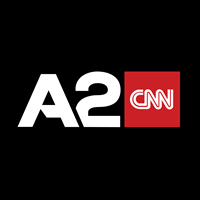
By Afrim Krasniqi
The preliminary report of the OSCE/ODIHR mission states that “the CEC registered 8 parties and 3 coalitions within the legal deadline and approved a total of 2,046 candidates in an inclusive process.”
When a Westerner reads that in a country with 1.6 million voters, 11 entities and over 2,000 candidates are competing, the idea of a highly competitive process is created.
In fact, statistics without content mean nothing.
I. First, 89 candidates were registered and after the registration of the subject they resigned from the candidacy. Their names remained on the list (closed list areas) but they were fictitious, mainly relatives of the heads and management staff of the political parties.
II. Secondly, from the CEC results it is seen that a larger number than those who resigned received "0" votes, meaning they were fictitious candidates and did not even vote for themselves.
III. Third, some electoral entities are fictitious, entering the process only to create the idea of competitive pluralism and clientelistic offers.
Here's one of them - 11 candidates on the open list won...only 10 votes, with 6 of them not even voting for themselves.
IV. Finally, the names are also incorrect, e.g., the political force that had the name "coalition" was actually a "party" and another that had the name "party" was actually a "coalition", also to create the idea of multiple flows, expansion and openness.
The Law on Political Parties sets a limit of 3,000 signatures for the creation of a political party, assuming that each party automatically receives over 3,000 votes in each election (its founders vote).
In these elections, two of the parties won 2.2 and 1.1 thousand votes respectively, much less than the number necessary for the existence of a political party. And each of them had 186 candidates, in total, 372 candidates with 3.3 thousand votes, with an average of less than 9 votes per candidate.
The value of such statistics?
I. Albania continues to have a fictitious party system: it started in 1991 with 11 entities, of which 6 were mass organizations of the Albanian People's Party, and after 35 years the concept remains the same - created and sponsored entities that enter into processes only to create the idea of plurality.
II. Confirmation of the thesis that statistical pluralism is not qualitative pluralism, our representative system suffers from massive fictitiousness, which also leads to fictitiousness in financing and clientelism in the division of power, and that out of over 2 thousand candidates that the OSCE/ODIHR cites to call the elections "inclusive" de facto, only 220 were competitive candidates with theoretical potential to win a mandate in the parliament with 140 deputies.
III. Albania is in dire need of reforming the legislation on political parties - a law that respects the principles of Article 9 of the Constitution (the obligation for internal democracy, the obligation for democratic organization and access to the system, the obligation for full transparency of funding sources and their expenditures).
A significant illustration is enough: the Socialist Party is in government for the fourth term, but the last time it elected a leader by vote dates back to September 2009, being one of the two leaders of this party in 35 years; the DP is known, it has been the same, is and says it will be even after 34 years, while other parties continue to be, since their creation, mainly individual parties united with their leader.
IV. The essence: due to the exercise of sovereignty through parties and due to the overpowering of political parties, Albania cannot be a state of law nor a functional democracy if it does not have democratic and functional competitive parties and electoral processes. Confirmation is also the ranking for 2024 -2025 as a “hybrid democracy” and a “partly free” country, when to be a member of the EU is an essential condition for the transition to a “functional democracy” and a “free” country, a process that based on the progress of the transition, if there are serious reforms takes at least a decade. (A2 Televizion)











